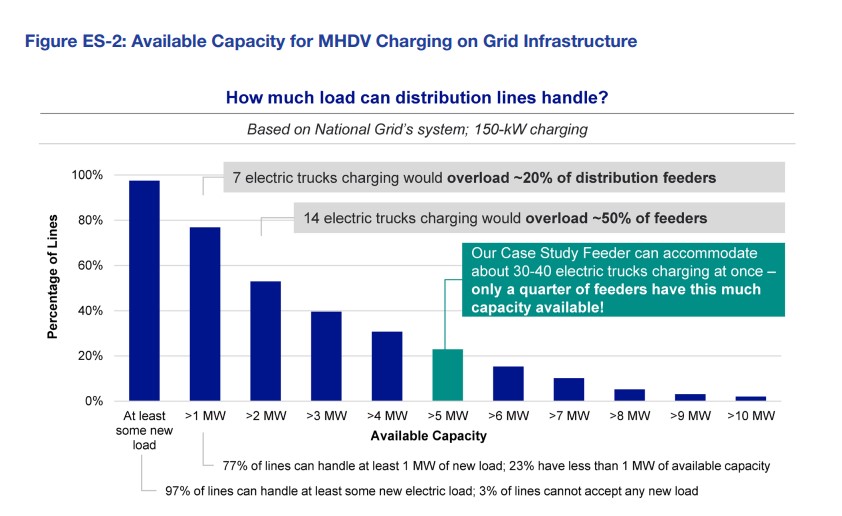
Ford, BMW and Honda team to build new bidirectional charging platform
By onAnnouncements | Technology
A trio of automakers have announced they’ll work together to create a new company called ChargeScape that will create a single platform for connecting electric utilities and automakers with electric vehicle (EV) drivers.
BMW, Ford and Honda said in a joint press release that they’re partnering on the initiative to share their collective research on the Open Vehicle-Grid Integration Platform (OVGIP). ChargeScape is intended to support grid resiliency through energy management.
Once launched, ChargeScape will create new opportunities for EVs to give back to the grid while affording EV customers financial benefits through managed charging and energy-sharing services, the OEMs said.
“Building on years of OVGIP cross-industry collaboration, ChargeScape’s single platform will eliminate the need for individual integrations between each automotive brand and each electric utility,” the press release said. “ChargeScape’s platform will give electric utilities access to EV battery energy across a wide pool of EVs.”
They added that EV customers will at some point be able to share the energy shared in their vehicle batteries with the grid during peak demand windows through vehicle-to-grid applications.
“Electric grid reliability and sustainability are the foundation for an EV powered future,” said Thomas Ruemenapp, BMW North America’s vice president of engineering. “ChargeScape aims to accelerate the expansion of smart charging and vehicle-to-everything solutions all over the country, while increasing customer benefits, supporting the stability of the grid and helping to maximize renewable energy usage.”
The project is underway as demand for EVs, and the infrastructure necessary to support them, grows. A new Gartner study has indicated that while half of new models marketed by automakers are expected to be electric by 2030, insufficient infrastructure could stall demand and prevent mass adoption.
BMW, Ford and Honda said that by working together, they can eliminate marketing and outreach costs for utilities trying to reach their individual customer bases, and that the OEMS will have multi-channel communications with their customers. This will give utilities an easy and affordable way to identify EV customers in their area, the OEMs said.
“Electric vehicles are unlocking entirely new benefits for customers that can save them money while supporting grid resiliency and increase the use of clean, renewable energy,” said Bill Crider, Ford’s global head of charging and energy services. “ChargeScape will help accelerate the true potential of the EV revolution by providing significant benefits to both utilities and EV customers through smart vehicle-to-grid services.”
Jay Joseph, Honda’s vice president of sustainability and business development, said the initiative would help it achieve its carbon neutral goals while benefiting customers and strengthening the grid.
“With automakers accelerating toward the electrified future, we must find solutions like ChargeScape that enable all stakeholders to work together for the good of our customers, society and our industry by enabling greater use of renewable energy for and from mobility,” Joseph said.
Other automakers will be invited to join ChargeScape’s system once it becomes fully operational.
The ChargeScape announcement was made around the same time a study was released by National Grid and Hitachi Energy underscoring the need for “proactive planning and strategic investment” to ensure the grid is ready for the electrification of medium and heavy duty vehicles (MHDV) like buses, trucks and vans.

While studying what would be needed from utilities to support the electrification of MHDVs, one power line called a “study feeder” was analyzed to estimate the EV and system impacts as larger percentages of vehicles charged. It found that when 10 percent of current MHDVs electrify, peak electric demand on the case study feeder would nearly double and when one-third charged, the line would exceed its rating.
National Grid and Hitachi Energy said the study demonstrates how electric network reconfiguration, multi-value grid infrastructure upgrades and non-wire solutions can collectively meet EV needs.
“This new study provides valuable, actionable insights that can help to guide planning for utilities and transportation companies alike,” said Anthony Allard, Hitachi Energy’s executive vice president and head of North America, Hitachi Energy. “Smarter planning and investments today, guided by close collaboration across the EV ecosystem, will help us avoid painful capacity challenges down the road. This work can provide a roadmap for smoother electric MHDV adoption.”
Also this week, the mobility and infrastructure company Hallcon announced it opened a new EV operations center in San Jose, California as part of the first phase of its multi-platform vehicle charging facility. It said the center will enable daily charging of more than 120 light, medium and heavy-duty EVs in the Bay area.
Separately, both Honda and Ford previously announced that they would expand their charging options to the North American Charging Standard (NACS) so drivers can use Tesla Superchargers in North America.
In May, Ford shared that drivers will be able to charge their EVs at Tesla’s 12,000 Superchargers in the U.S.
In the U.S. and Canada by next spring. Ford Mustang Mach-E, F-150 Lightning, and E-Transit models will be able to connect with the chargers through an adapter and software integration. Beginning in 2025, Ford said its next-generation EVs will no longer need a charging adapter.
Last week, Honda said it would adopt NACS for the charging port of its EV models beginning in 2025. It also said it’s planning to launch a new EV model in North America equipped with a NACS in 2025, from which point it will continue adapting NACS standards for its models.
Images
Featured image: Courtesy of Ford
Graphic courtesy of National Grid and Hitachi Energy
